Mark T Keane
Augmenting The Weather: A Hybrid Counterfactual-SMOTE Algorithm for Improving Crop Growth Prediction When Climate Changes
Nov 14, 2025Abstract:In recent years, humanity has begun to experience the catastrophic effects of climate change as economic sectors (such as agriculture) struggle with unpredictable and extreme weather events. Artificial Intelligence (AI) should help us handle these climate challenges but its most promising solutions are not good at dealing with climate-disrupted data; specifically, machine learning methods that work from historical data-distributions, are not good at handling out-of-distribution, outlier events. In this paper, we propose a novel data augmentation method, that treats the predictive problems around climate change as being, in part, due to class-imbalance issues; that is, prediction from historical datasets is difficult because, by definition, they lack sufficient minority-class instances of "climate outlier events". This novel data augmentation method -- called Counterfactual-Based SMOTE (CFA-SMOTE) -- combines an instance-based counterfactual method from Explainable AI (XAI) with the well-known class-imbalance method, SMOTE. CFA-SMOTE creates synthetic data-points representing outlier, climate-events that augment the dataset to improve predictive performance. We report comparative experiments using this CFA-SMOTE method, comparing it to benchmark counterfactual and class-imbalance methods under different conditions (i.e., class-imbalance ratios). The focal climate-change domain used relies on predicting grass growth on Irish dairy farms, during Europe-wide drought and forage crisis of 2018.
Industrial Memories: Exploring the Findings of Government Inquiries with Neural Word Embedding and Machine Learning
Aug 02, 2023Abstract:We present a text mining system to support the exploration of large volumes of text detailing the findings of government inquiries. Despite their historical significance and potential societal impact, key findings of inquiries are often hidden within lengthy documents and remain inaccessible to the general public. We transform the findings of the Irish government's inquiry into industrial schools and through the use of word embedding, text classification and visualisation, present an interactive web-based platform that enables the exploration of the text to uncover new historical insights.
* Machine Learning and Knowledge Discovery in Databases. ECML PKDD 2018. Lecture Notes in Computer Science
Even if Explanations: Prior Work, Desiderata & Benchmarks for Semi-Factual XAI
Jan 27, 2023Abstract:Recently, eXplainable AI (XAI) research has focused on counterfactual explanations as post-hoc justifications for AI-system decisions (e.g. a customer refused a loan might be told: If you asked for a loan with a shorter term, it would have been approved). Counterfactuals explain what changes to the input-features of an AI system change the output-decision. However, there is a sub-type of counterfactual, semi-factuals, that have received less attention in AI (though the Cognitive Sciences have studied them extensively). This paper surveys these literatures to summarise historical and recent breakthroughs in this area. It defines key desiderata for semi-factual XAI and reports benchmark tests of historical algorithms (along with a novel, naieve method) to provide a solid basis for future algorithmic developments.
Explaining Classifications to Non Experts: An XAI User Study of Post Hoc Explanations for a Classifier When People Lack Expertise
Dec 19, 2022Abstract:Very few eXplainable AI (XAI) studies consider how users understanding of explanations might change depending on whether they know more or less about the to be explained domain (i.e., whether they differ in their expertise). Yet, expertise is a critical facet of most high stakes, human decision making (e.g., understanding how a trainee doctor differs from an experienced consultant). Accordingly, this paper reports a novel, user study (N=96) on how peoples expertise in a domain affects their understanding of post-hoc explanations by example for a deep-learning, black box classifier. The results show that peoples understanding of explanations for correct and incorrect classifications changes dramatically, on several dimensions (e.g., response times, perceptions of correctness and helpfulness), when the image-based domain considered is familiar (i.e., MNIST) as opposed to unfamiliar (i.e., Kannada MNIST). The wider implications of these new findings for XAI strategies are discussed.
Features of Explainability: How users understand counterfactual and causal explanations for categorical and continuous features in XAI
Apr 21, 2022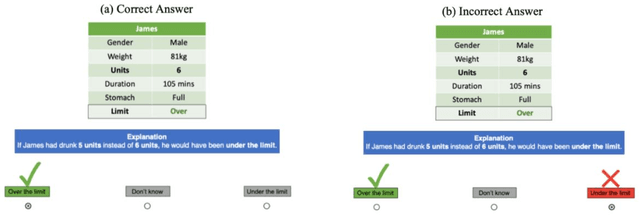
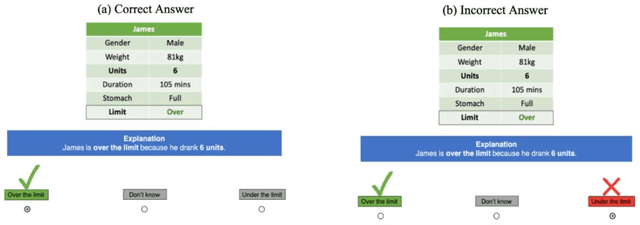
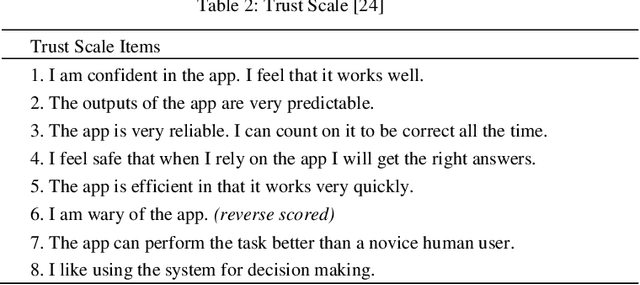
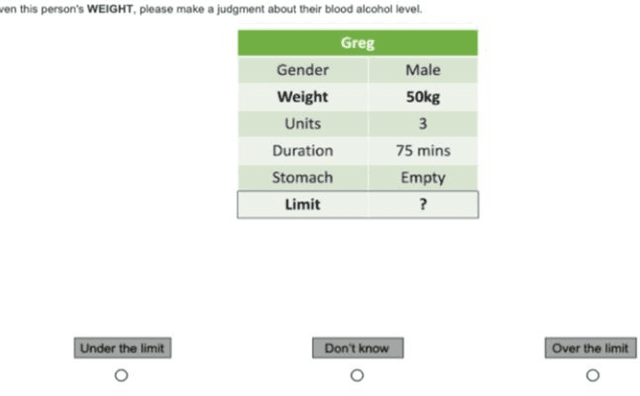
Abstract:Counterfactual explanations are increasingly used to address interpretability, recourse, and bias in AI decisions. However, we do not know how well counterfactual explanations help users to understand a systems decisions, since no large scale user studies have compared their efficacy to other sorts of explanations such as causal explanations (which have a longer track record of use in rule based and decision tree models). It is also unknown whether counterfactual explanations are equally effective for categorical as for continuous features, although current methods assume they do. Hence, in a controlled user study with 127 volunteer participants, we tested the effects of counterfactual and causal explanations on the objective accuracy of users predictions of the decisions made by a simple AI system, and participants subjective judgments of satisfaction and trust in the explanations. We discovered a dissociation between objective and subjective measures: counterfactual explanations elicit higher accuracy of predictions than no-explanation control descriptions but no higher accuracy than causal explanations, yet counterfactual explanations elicit greater satisfaction and trust than causal explanations. We also found that users understand explanations referring to categorical features more readily than those referring to continuous features. We discuss the implications of these findings for current and future counterfactual methods in XAI.
Twin Systems for DeepCBR: A Menagerie of Deep Learning and Case-Based Reasoning Pairings for Explanation and Data Augmentation
Apr 29, 2021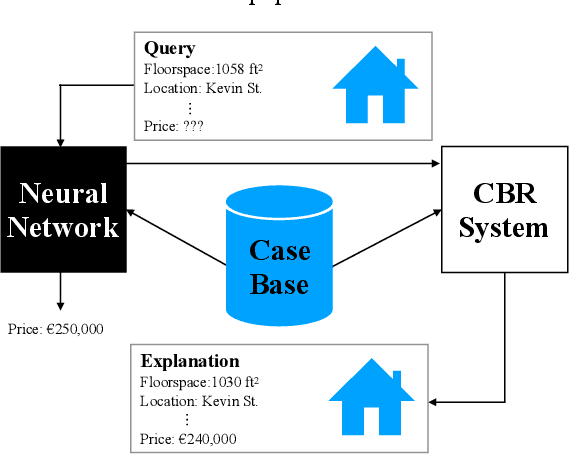

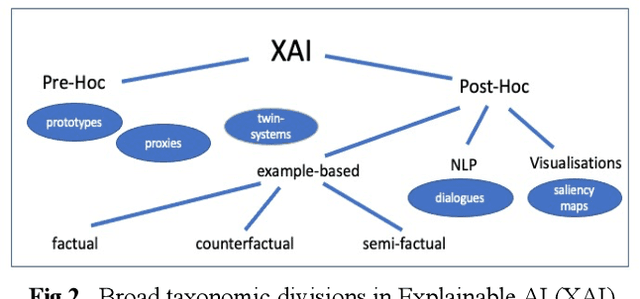

Abstract:Recently, it has been proposed that fruitful synergies may exist between Deep Learning (DL) and Case Based Reasoning (CBR); that there are insights to be gained by applying CBR ideas to problems in DL (what could be called DeepCBR). In this paper, we report on a program of research that applies CBR solutions to the problem of Explainable AI (XAI) in the DL. We describe a series of twin-systems pairings of opaque DL models with transparent CBR models that allow the latter to explain the former using factual, counterfactual and semi-factual explanation strategies. This twinning shows that functional abstractions of DL (e.g., feature weights, feature importance and decision boundaries) can be used to drive these explanatory solutions. We also raise the prospect that this research also applies to the problem of Data Augmentation in DL, underscoring the fecundity of these DeepCBR ideas.
Handling Climate Change Using Counterfactuals: Using Counterfactuals in Data Augmentation to Predict Crop Growth in an Uncertain Climate Future
Apr 08, 2021

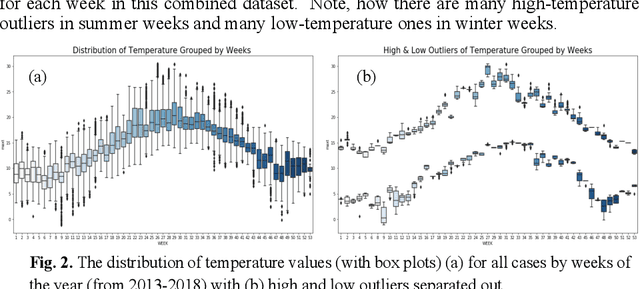

Abstract:Climate change poses a major challenge to humanity, especially in its impact on agriculture, a challenge that a responsible AI should meet. In this paper, we examine a CBR system (PBI-CBR) designed to aid sustainable dairy farming by supporting grassland management, through accurate crop growth prediction. As climate changes, PBI-CBRs historical cases become less useful in predicting future grass growth. Hence, we extend PBI-CBR using data augmentation, to specifically handle disruptive climate events, using a counterfactual method (from XAI). Study 1 shows that historical, extreme climate-events (climate outlier cases) tend to be used by PBI-CBR to predict grass growth during climate disrupted periods. Study 2 shows that synthetic outliers, generated as counterfactuals on a outlier-boundary, improve the predictive accuracy of PBICBR, during the drought of 2018. This study also shows that an instance-based counterfactual method does better than a benchmark, constraint-guided method.
If Only We Had Better Counterfactual Explanations: Five Key Deficits to Rectify in the Evaluation of Counterfactual XAI Techniques
Feb 26, 2021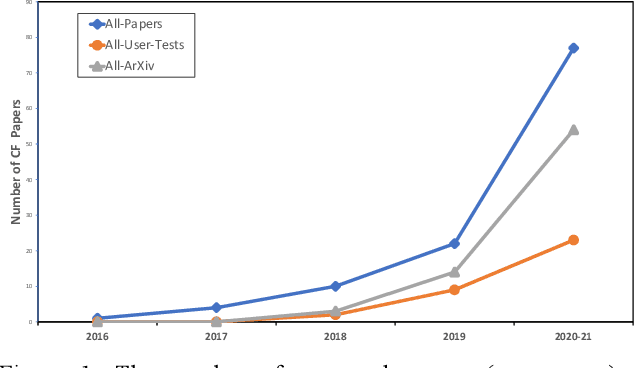
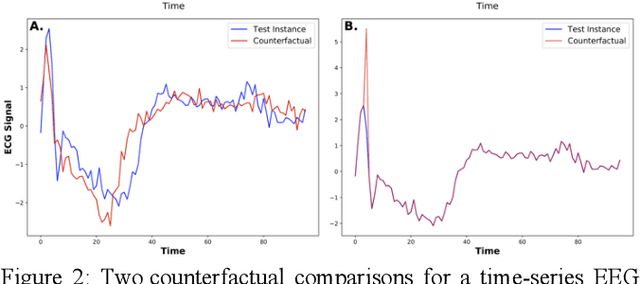
Abstract:In recent years, there has been an explosion of AI research on counterfactual explanations as a solution to the problem of eXplainable AI (XAI). These explanations seem to offer technical, psychological and legal benefits over other explanation techniques. We survey 100 distinct counterfactual explanation methods reported in the literature. This survey addresses the extent to which these methods have been adequately evaluated, both psychologically and computationally, and quantifies the shortfalls occurring. For instance, only 21% of these methods have been user tested. Five key deficits in the evaluation of these methods are detailed and a roadmap, with standardised benchmark evaluations, is proposed to resolve the issues arising; issues, that currently effectively block scientific progress in this field.
A Few Good Counterfactuals: Generating Interpretable, Plausible and Diverse Counterfactual Explanations
Jan 22, 2021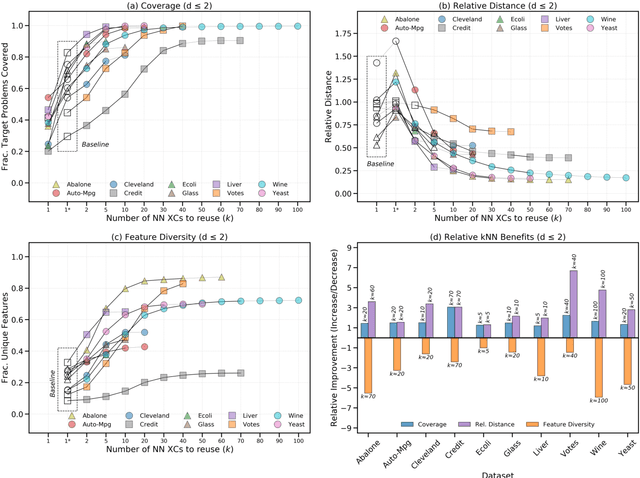
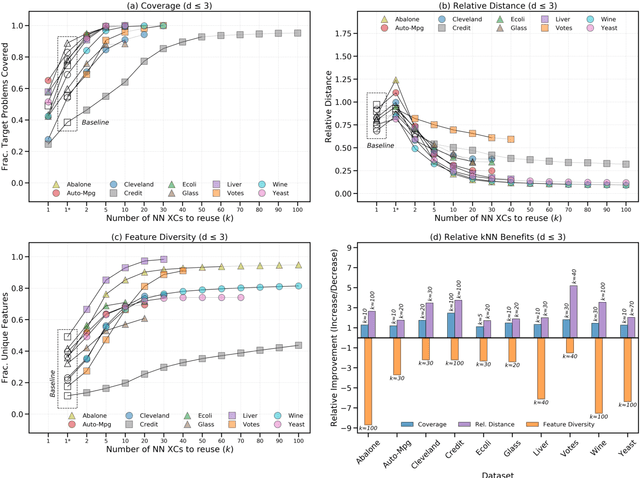
Abstract:Counterfactual explanations provide a potentially significant solution to the Explainable AI (XAI) problem, but good, native counterfactuals have been shown to rarely occur in most datasets. Hence, the most popular methods generate synthetic counterfactuals using blind perturbation. However, such methods have several shortcomings: the resulting counterfactuals (i) may not be valid data-points (they often use features that do not naturally occur), (ii) may lack the sparsity of good counterfactuals (if they modify too many features), and (iii) may lack diversity (if the generated counterfactuals are minimal variants of one another). We describe a method designed to overcome these problems, one that adapts native counterfactuals in the original dataset, to generate sparse, diverse synthetic counterfactuals from naturally occurring features. A series of experiments are reported that systematically explore parametric variations of this novel method on common datasets to establish the conditions for optimal performance.
How Case Based Reasoning Explained Neural Networks: An XAI Survey of Post-Hoc Explanation-by-Example in ANN-CBR Twins
May 17, 2019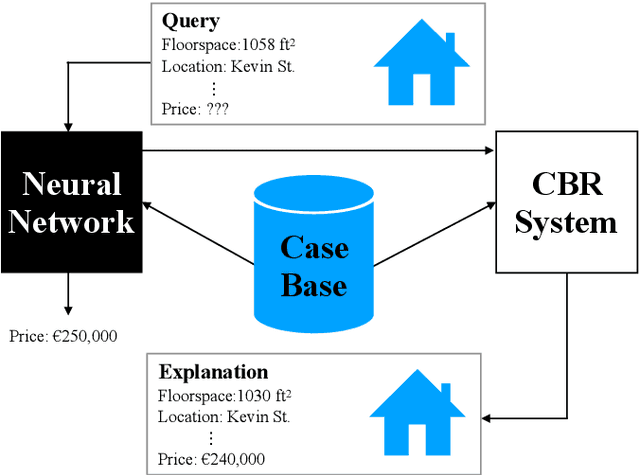
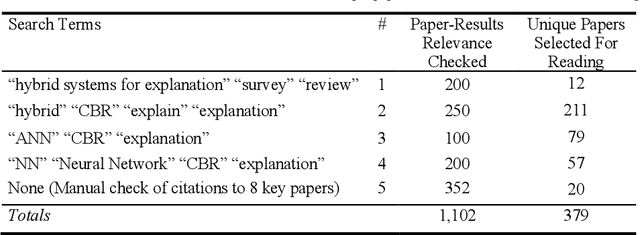
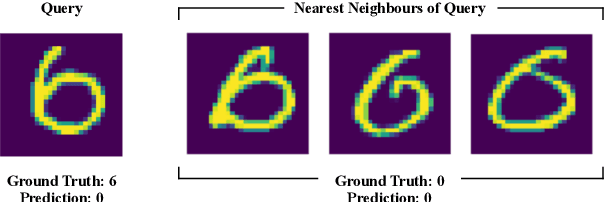
Abstract:This paper surveys an approach to the XAI problem, using post-hoc explanation by example, that hinges on twinning Artificial Neural Networks (ANNs) with Case-Based Reasoning (CBR) systems, so-called ANN-CBR twins. A systematic survey of 1100+ papers was carried out to identify the fragmented literature on this topic and to trace it influence through to more recent work involving Deep Neural Networks (DNNs). The paper argues that this twin-system approach, especially using ANN-CBR twins, presents one possible coherent, generic solution to the XAI problem (and, indeed, XCBR problem). The paper concludes by road-mapping some future directions for this XAI solution involving (i) further tests of feature-weighting techniques, (iii) explorations of how explanatory cases might best be deployed (e.g., in counterfactuals, near-miss cases, a fortori cases), and (iii) the raising of the unwelcome and, much ignored, issue of human user evaluation.
 Add to Chrome
Add to Chrome Add to Firefox
Add to Firefox Add to Edge
Add to Edge